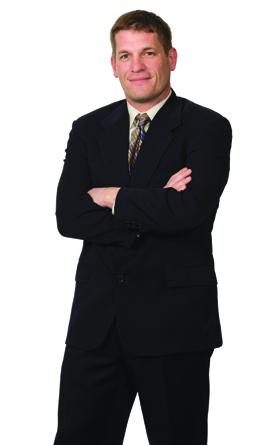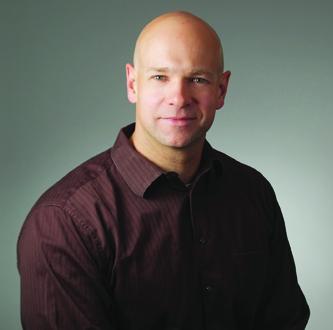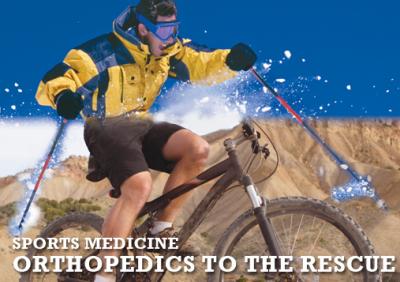
Dr. Steven J. Klepps
Ortho Montana
Billings
www.montanabones.com
(406) 237-5050
Dr. Klepps is a fellowship-trained and board-certified orthopedic physician. He specializes in sports medicine with an emphasis on shoulder and elbow disorders. He combines advanced surgical techniques, with his interest in on-field injuries, athlete biomechanics, and rehabilitation. Dr. Klepps is a partner at the largest orthopedic practice in the state, Ortho Montana in Billings.

Dr. Robert Amrine
Missoula Bone & Joint, LLC
Missoula
www.Missoulaboneandjoint.com
(406) 829-5574
Dr. Robert Amrine is a fellowship trained non-surgical sports medicine specialist. He treats patients of all ages with acute or chronic orthopedic injuries such as sports related concussion management, overtraining, pre-participation physical examinations, endurance athlete medicine, and musculoskeletal ultrasound.

Dr. Alex LeGrand
Bridger Orthpedics and Sports Medicine
Bozeman
www.Bridgerorthopedic.com
(406) 587-0122
Alex LeGrand is a board-certified orthopedic surgeon, fellowship-trained in Sports Medicine. He is an active US ski and snowboard physician and is the head team physician for MSU. He practices at Bridger Orthopedics and Sports Medicine.
What percentage of your practice pertains to sports medicine and injuries?
Klepps: It depends on what you mean by sports medicine.
If we are only talking college and younger athletes then the percentage is probably not that high because fortunately most are able to stay healthy. However, if you count weekend warriors, workman’s comp injuries, and farm and ranch injuries, which I do because these patients have the same mindset — to get fixed and get back to their activity — then this is actually a large part of our practice. Many folks with shoulder problems are elderly with rotator cuff or arthritic problems. So, I would say our practice is 50% sports made up of younger patients or active adults with injuries of the shoulder, knee, or elbow. The other 50% is made up of elderly folks with shoulder issues as mentioned. I also have a unique elbow practice in that I am the only physician in the area who will take care of the pitching injury known as a Tommy John injury, so I see a fair amount of pitchers and baseball players from all over the state.
My partners — Dr. Shenton, Dr. Phipps, and Dr. Elliot — have practices that most likely consist of 75% sports injuries. They each have their unique aspects such as cartilage and meniscus implants for Dr. Shenton, sports injuries in the foot and ankle or knee for Dr. Elliot, and concussions and non-surgical issues such as stress fractures for Dr. Phipps.
Amrine: Greater than 90% of my practice has an association with sports medicine either via sports/activity related illnesses or injuries.
LeGrand: My practice ranges from ACL reconstructions in 17-year-old athletes to rotator cuff repairs in 75-year-old ranchers. Within this definition, approximately 90 percent of my practice is sports medicine and associated injuries.
What should someone look for when seeking an orthopedic physician for a sport injury?
LeGrand: For most orthopedic conditions, repetition is key to improve results, reduce complications and typically reduce costs. For that reason, volume is one of the more important things to look for when seeking care for a sports injury.
If your surgeon does a high volume of ACL reconstructions a year, he or she is more likely to accurately diagnose your knee injury, provide you with the full range of treatment options, and where surgery is indicated, provide technically proficient care.
Another factor to evaluate is fellowship training. After the standard five years of orthopedic residency training, orthopedic surgeons can choose to do a fellowship in one of many areas, including sports medicine. This fellowship provides a year of subspecialty training on both the common and unusual sports medicine conditions and helps ensure comfort with most related issues.

Klepps: I really think they need to look for a physician who specializes in the area of their injury. As stated, not all sports specialists focus on the same area. The reason for this is the field of sports injuries has exploded with us now recognizing and treating many injuries we would have ignored or treated with conservative, non-operative treatment in the past. Regarding rotator cuff injuries, which are very common, any sports physician should be able to treat the small to medium tear, but when the tears become large or irreparable, then a true shoulder specialist should be consulted. These patients are often referred to me through other orthopedic surgeons for graft placement, muscle transfers, or even replacement, which are all newer experimental options.
I also think the patient needs to make sure the sports surgeon is truly a sports surgeon. You can figure this out by looking at their Web site and discussing it with the physician.
Amrine: Good sports medicine doctors have a strong ability to understand the desires of their patients. This comes from their interest in sports, their training, and simply asking what your goals are. A physician that doesn’t understand what you do, will have a difficult time understanding your goals.
When should one choose an orthopedic doctor instead of a family doctor for sport-related trauma?
LeGrand: As an orthopedic surgeon, I will freely admit to a strong bias here. Although there are phenomenal family practitioners who do an excellent physical exam, the incredibly varied scope of their practice makes it difficult to master all elements. For most sports trauma, an orthopedic surgeon with a sports medicine focus will typically be able to provide the correct diagnosis and treatment options in less time and with less expensive (MRIs) studies.
There is sometime a concern that a surgeon will always be looking for surgery as a treatment option at the expense of less invasive options. The truth is surgeons invest heavily in their patients and want them to do well. When faced with equal results with and without surgery, a good orthopedic surgeon will recommend conservative care the vast majority of the time. From a practice or business model, unindicated surgeries will decrease a surgeon’s reputation and have a long term negative financial impact.
Klepps: At Ortho Montana, we actually train the residents and provide the only sports medicine fellowship in the state. So, I think in most cases, patients should start with their family practice doctor who will refer them if they are not responding to conservative treatment.
However, if the patient has a clear injury that requires surgery such as some fractures, ACL injuries, or muscles tears such as the quadriceps or Achilles, it is more efficient to just go straight to the orthopedic surgeon. Often times, patient can make this determination in the training room, on the field, in the ER or Urgent care setting. We have recently developed an Orthopedic Urgent Care center to assist with this which is much more convenient and less expensive than the ER to evaluate these type of injuries.
Amrine: A strong family physician often has a good foundation of basic sport-related trauma. This knowledge often is advantageous to guiding you quickly to the correct consultants and therapies. Thus, if you have a good relationship with your doctor and have good access, this is a great starting point. However, if you don’t have a relationship or are unable to be seen, calling your sports medicine clinic may offer you guidance.
In Montana, what sport-related injuries do you treat most often?
Klepps: In the shoulder, I will see injuries such as dislocations that can lead to recurrent instability as well as labral tears which can lead to pain in overhead athletes such as volleyball, tennis, or baseball players. I also see patients with shoulder (AC joint) separations and even fractures. Rotator cuff tears tend to be more common in older patients but can occur in athletes as well. Elbow injuries include ligament injuries such as the Tommy John injury in baseball players, cartilage injuries known as OCD lesions, biceps and triceps tears, ulnar nerve compression, and fractures. I also see general injuries in the knees such as ACL tears, meniscus injuries and patella dislocations.
LeGrand: Approximately 80 percent of my practice is knee injuries and 20 percent is shoulder. The most common knee injuries I treat are ACL tears, meniscal tears (both of which often require surgery) and MCL injuries (most of which do well without surgery). By far the most common shoulder injuries I take care of are instability (dislocations) and rotator cuff tears. Starting at in January, we will have a second sports medicine specialist who will be doing complex and simple hip arthroscopy.
Amrine: Montana is a small enough state that many of my athletes know me socially and know my interests in endurance sports. Thus, the majority of my patients are also endurance athletes with their primary interests being in running or cycling. This is also helped by Missoula and Montana becoming known as a hot bed for ultra runners, mountain bikers and outdoor enthusiasts. Thus, I see frequent overuse injuries of the hip, knee, and ankle along with illnesses that prevent them from continuing to do what they love.
How is the medical approach different for youth, 18 and under? Are they a large part of your practice?
Klepps: Younger athletes raise a few issues. Many of these athletes especially in Montana are multi-sport athletes. So, one injury may take them out of several seasons of sports. Fortunately, the younger someone is quicker to heal, so we try to use this as an advantage to help them get back to sports. A second issue is they have open growth plates, which need to be closely followed for injury. Failing to recognize an injury can lead to growth disturbances, deformity, etc. Often times, these growth plate injuries can be difficult to diagnose.
The sports physician needs to be hyper-vigilant. Lastly, young athletes have parents that are directly involved, which means they will have excellent care and follow the recommendations well (this isn’t always the case in the college athlete), but can also bring in a lot more emotion. We have to make sure there is open communication with all members of the family, so that we can keep these emotions in check as this can really affect the athlete’s recovery.
Amrine: High school age athletes are a majority in my patient population, especially during the school season. High school sports put a large pressure on young athletes’ injuries due to the relatively short seasons and high frequency of competition leading to time constraints. Thus, we tend to have less opportunity for a period observation, which leads to a higher use of diagnostic studies for definitive diagnosis and treatment plans. Albeit, the level of accepted risk of playing with an injury is much less with young athletes to avoid chronic problems.
LeGrand: Youths and young adults do make up a significant segment of my practice and provide unique challenges and rewards. For some conditions, age can be a major determination of treatment direction. As an example, shoulder instability treatments are dependent in large part on age. Numerous studies have shown recurrent dislocations rates as high as 80-90 percent for patients in their teenage years versus rates as low as 20 percent in patients over 50.
Other conditions are based less on chronological age and more on activity levels and life style. As another example, ACL surgery is generally recommended for younger and more active patients. That said, in our community (Bozeman), we have 55 year old dare devils who ski 70 days a year, hike cliffs higher than I would ever consider, and would likely benefit from surgery if they were unfortunate enough to rupture their ACL. The other unique issue with youth athletes is they are more likely to participate in organized sports activities, making return to play issues and timing more significant.
How would you describe your practice’s general approach to sports medicine and orthopedic treatment?
LeGrand: Our practice truly embraces the subspecialty model across all fields, including sports medicine. From a patient’s perspective, that means for any given injury, you will be treated by a physician with tertiary training and experience for that problem. Our community is extremely active and that really is part of the town identity. As such, we recognize the significance of sports related injuries and are committed to early and expert treatment to get people back out enjoying all Montana has to offer.
Klepps: My general approach is a team approach. It starts with the athletic trainers that are present at the schools. Most folks don’t realize how well trained these ATs are. Most have a master’s degree and do a great job at treating common injuries and knowing when to send them in for x-rays or further evaluation. We have eight full-time trainers who cover all the high schools in Billings, many of the smaller schools in our area, and both colleges.
Once they are referred in for evaluation, we prefer to have the initial evaluation performed by a physician. With their experience and multiple years of training we feel seeing a physician early in their course can shorten the recovery process. Every week counts. Once a diagnosis is made we again use a full team of therapists, physician assistants, and radiologists to accurately diagnose and treat the injury to help the patient get better as quickly and safely as possible. Most injuries can be treated without surgery, which requires the full efforts of the team. However, those that require surgery are expedited to our modern surgery center with the latest equipment for treatment. We have well-trained surgical technicians skilled in assisting with these advanced surgeries again helping the patient get through the process as smoothly and atraumatically as possible. Post-op, therapists (especially occupational therapists in farmers/rancher and workers) and trainers are essential in getting the patient back to work or sport. In short, a team effort seems to work best in helping patients overcome these injuries and there is nothing more satisfying than seeing an athlete or worker make it back successfully.
Amrine: My primary goal is to help active people remain active while doing this in the safest and most efficient means possible.
Leave a Comment Here